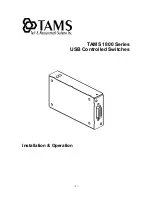
Introducing the Switches
|
7
Network ports
Switch
Model name
SFP28 ports
QSFP28 ports
R8P13A/R8P14A
Aruba 10000 48Y6C
48
6
For supported transceivers, see the latest version of the
Transceiver Guide
.
Split mode (QSFP28)
QSFP ports on the Aruba 10000 switch series are capable of operating as:
n
100G ports
n
40G ports
n
Split into 4 individual 25G or 10G ports
Console port
Aruba 10000 switches include an RJ-45 serial console port on the front of the switch. This port is used to
connect a console to the switch by using an RJ-45 serial cable (not supplied). A DB9-to-RJ-45 console cable
can be ordered from HPE: JL448A, Aruba X2C2 RJ45 to DB9 Console Cable.
The 10000 switches also include a USB-C console port on the rear of the switch. This port can be used to
connect a console to the switch by using a standard USB-C cable (not supplied). The USB-C port has
precedence for input. If both cables are plugged in, the console output is echoed to both the RJ-45 and the
USB-C ports, but the input is only accepted from the USB-C port.
n
Use of the USB-C port may require the installation of a standard USB driver. New Windows installs include
the driver by default.
n
USB driver available from Aruba:
https://support.arubanetworks.com/ToolsResources/tabid/76/DMXModule/514/Default.aspx?EntryId=7512
For more information on the console connection, see
Setup for Initial Configuration
. The console can be a
PC or workstation running a VT-100 terminal emulator, or a VT-100 terminal.
The Aruba CX mobile app and the Aruba USB Bluetooth adapter enable you to configure your switch from
your mobile device. For information about using the Aruba CX mobile app to configure the switch, see the
Fundamentals Guide
for your switch and software release.
Out-of-band management (OOBM) port
This RJ-45 port is used to connect a dedicated management network to the switch. To use it, connect an RJ-
45 network cable to the management port to manage the switch through Telnet from a remote PC or a
UNIX workstation.
To use this port, the switch must have an IP address. IP settings can be configured through a console port
connection or automatically from a DHCP/Bootp server.
A networked out-of-band connection through the management port allows you to manage data network
switches from a physically and logically separate management network.
For more information, see the
Fundamentals Guide
for your switch.
USB-A aux port








































